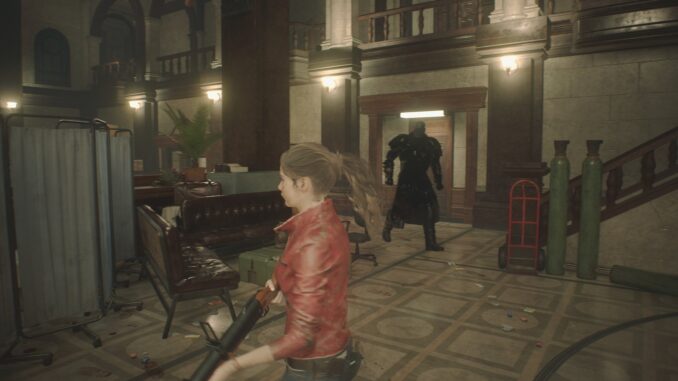
In the world of survival horror gaming, few elements invoke both dread and frustration quite like the presence of an unkillable enemy. Whether it's the relentless pursuit of Mr. X in Resident Evil 2 or the dreaded EMMIs in Metroid Dread, these adversaries stand as imposing obstacles, raising questions about their role in gameplay and narrative tension.
The recent discourse on social media platforms like Twitter highlights the polarizing nature of unkillable enemies. While some gamers appreciate their contribution to the horror atmosphere, others find them more irksome than intimidating. The debate often revolves around whether these foes truly enhance the gaming experience or if they merely serve as a source of annoyance.
One argument in favor of unkillable enemies is their ability to amplify the sense of tension and fear. These adversaries, by their very nature, create an atmosphere of constant threat, forcing players to remain on edge as they navigate the game world. The presence of Mr. X in Resident Evil 2, for example, instills a feeling of dread as players must carefully plan their movements to evade his relentless pursuit. Such encounters can lead to moments of genuine panic and exhilaration, heightening the overall horror experience.
Additionally, unkillable enemies often serve as a central gameplay mechanic, shaping the player's progression and strategy. In games like Resident Evil 2, Mr. X's presence necessitates resource management and careful decision-making. Players must weigh the risks of confrontation against the rewards of exploration, adding depth to the gameplay loop. These enemies become integral to the game's design, providing a unique challenge that sets the experience apart from more conventional action games.
However, the frustration voiced by some gamers cannot be ignored. For many, repeated encounters with unkillable enemies lead to feelings of annoyance and disillusionment. The inability to permanently dispose of these foes can detract from the immersion, breaking the suspension of disbelief and reminding players that they are bound by the game's predetermined rules. Moreover, the sheer difficulty of overcoming these enemies can result in a sense of powerlessness, diminishing the satisfaction of progression.
Critics also argue that the concept of unkillable enemies may be outdated, particularly in an era where gaming has evolved to offer diverse experiences. While they may have been effective in older titles, such tropes may not resonate as strongly with modern audiences. As seen in the comments on Twitter, some players express a preference for horror games that eschew traditional conventions in favor of innovative gameplay mechanics.
In response to these criticisms, game developers face a challenge in balancing the demands of tension and frustration. One potential solution could involve providing players with more agency in dealing with unkillable enemies, offering alternative strategies or temporary reprieves. For example, allowing players to temporarily incapacitate Mr. X or providing opportunities for strategic evasion could mitigate feelings of helplessness while preserving the horror atmosphere.
Ultimately, the debate surrounding unkillable enemies in gaming reflects the broader discourse on the role of challenge and immersion in interactive entertainment. While these adversaries can undoubtedly enhance the horror experience for some players, their implementation requires careful consideration to avoid alienating others. As game developers continue to innovate and evolve, the future of survival horror gaming may lie in finding creative ways to terrify and thrill players without resorting to outdated tropes.
Leave a Reply